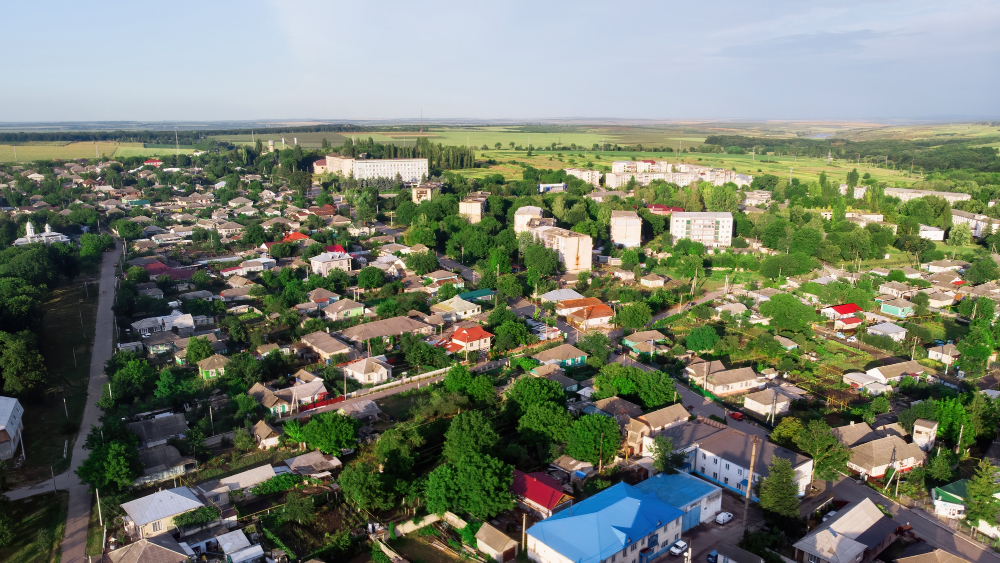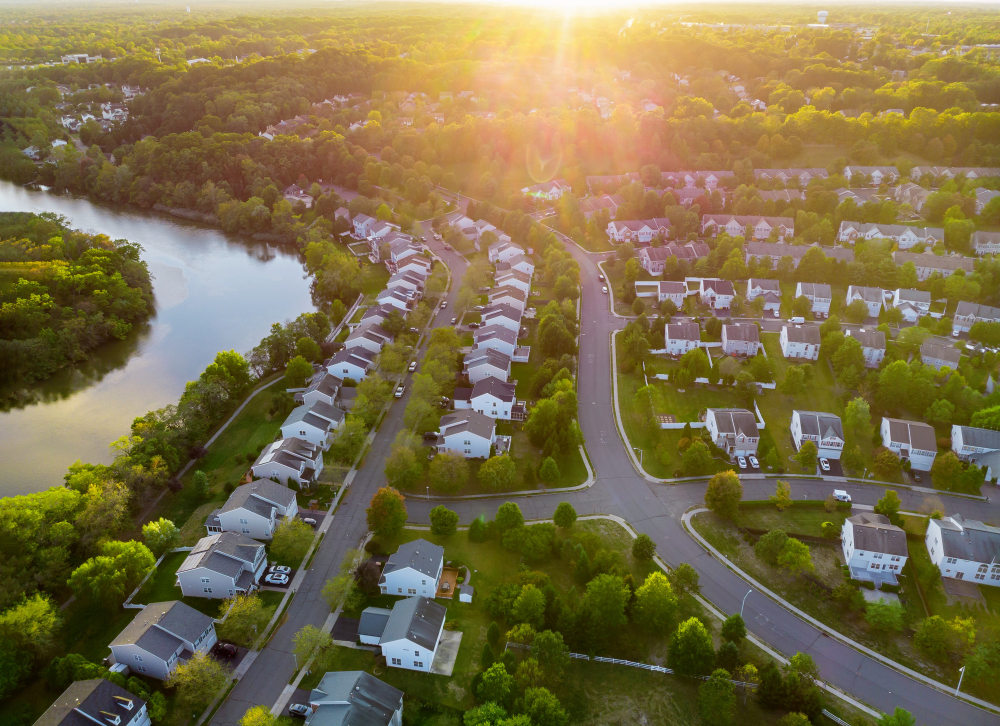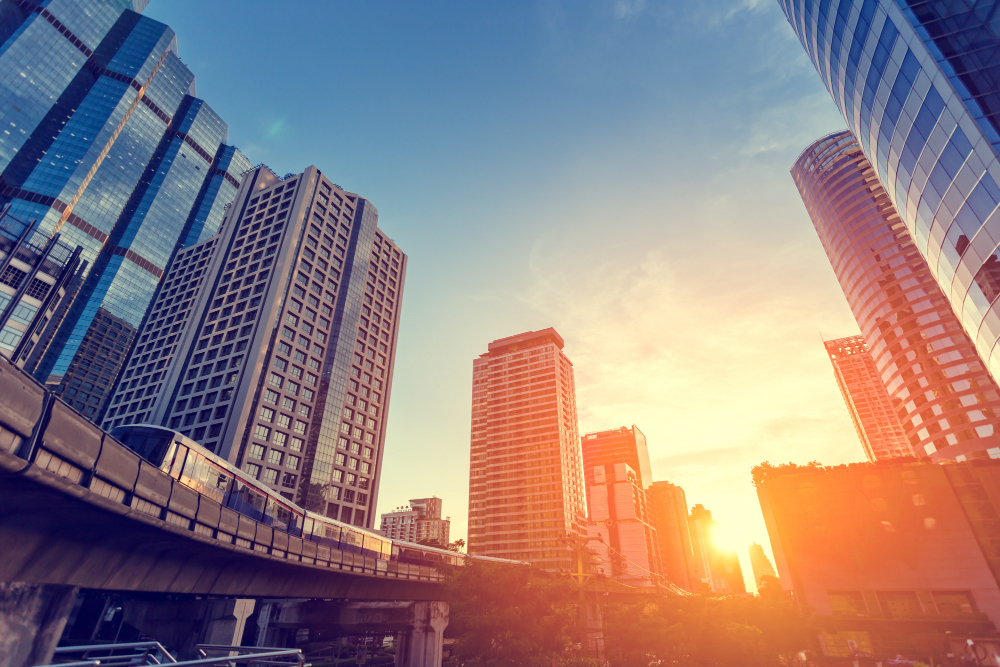Capitalizing on PH Regions’ 2022 Economic Growth: Exploring Real Estate Investment Hotspots

From 2021 to 2023, the Philippine economy has been on a path to recovery after facing challenges due to the COVID-19 pandemic. In 2021, the country’s GDP growth was 5.6%, accelerating to 7.6% in 2022. The economic forecast for the Philippines in 2023 projects a growth rate of around 5.3%. This growth is supported by the recovery in various sectors, including real estate, construction, and manufacturing. However, the country’s public deficit and inflation rate have also been on the rise, reaching 7.3% of GDP in 2022 and an inflation rate of 5.82%.
According to expert data, a slowdown can be attributed to decreased investments in public infrastructure projects due mainly to limited government resources and lower exports from major sources of foreign exchange such as electronics and textiles. Regardless of these challenges, real estate investments remain a key driver for economic progress by providing jobs for Filipinos as well as boosting the construction industry which supports other related sectors such as manufacturing, transportation and logistics services among others.
Economic Growth in the Philippines
In 2023, the Philippine economy is forecasted to experience growth, although it may not rise significantly above pre-COVID-19 levels. The following are some of the key factors that will shape the Philippine economy in 2023:
- Recovery in employment and retail trade: The Philippine economy is expected to create significant increase in the number of jobs in 2023, which will help to reduce unemployment. Retail trade is also expected to recover, as more people return to work and consumer spending picks up.
- Sustained expansion in the manufacturing sector: The manufacturing sector is expected to continue to expand in 2023, supported by strong demand from both domestic and foreign markets.
- Rising public infrastructure spending: The government is planning to increase public infrastructure spending in 2023.
- Growth Risks: Political uncertainty remains a key risk factor for investors as it can affect consumer confidence and investment decisions. Another important consideration is that while China remains an important trading partner for the Philippines, their economic slowdown could also negatively impact Philippine exports if there is no alternative market available. Additionally, trade wars between the US and China could result in decreased demand for goods produced by Southeast Asian countries such as the Philippines (e.g., electronics).
Real Estate Market Overview
In 2021, the Philippines’ real estate market’s size was estimated to be PHP 529 billion, and it is expected to grow at a compound annual growth rate (CAGR) of 7.5% from 2022 to 2026. It is divided into two main segments: residential and commercial. The residential segment is the largest segment, and it is dominated by single-family homes and condominiums. The commercial segment is smaller, but it is growing rapidly, and it is dominated by office buildings, retail space, and hotels.
The Philippine real estate market is a good investment opportunity for a number of reasons. The market is growing rapidly, and there is a strong demand for real estate. Interest rates are low, and the government is supportive of the sector. However, there are also some risks associated with investing in the Philippine real estate market. The market is still relatively young, and it is not as developed as some other markets. There is also a risk of political instability, which could impact the market.
Identifying real estate investment hotspots in the Philippines

The Philippines has been experiencing rapid growth for the last few years which has led to a demand for more residential units. This has resulted in an increase in property prices over time, especially in Metro Manila where most people want to live because it offers better amenities compared to other cities across the country.
With rising demand and limited supply of land available for development projects, there will be a shortage of homes not far in the future. This means that prices may go up even further as real estate investors try their best at getting hold of these properties before they become unaffordable again later down the line.
To determine which real estate hotspots are most likely to experience growth, we used a variety of criteria. Our analysis looked at:
- Population and demographic trends;
- Economic indicators such as GDP (gross domestic product), employment rates, and disposable income;
- Accessibility to key infrastructure like airports and highways; and
- Land use patterns.
Metro Manila
Metro Manila is the capital of the Philippines and is home to over 12 million residents. It’s also one of the most densely populated areas in Southeast Asia, with a population density of 43,000 people per square kilometer (111,000/sq mi).
In terms of real estate investment opportunities, Metro Manila offers a wide range of options ranging from luxury residential units and office spaces to industrial estates and retail centers. The city has been growing rapidly due to increasing economic activity generated by foreign companies establishing operations there; as such, demand for commercial properties has increased significantly during this period as well.
Key areas in Metro Manila that have attracted investors include:
Makati City: Known as the financial capital of the Philippines, Makati City is home to the central business district, upscale residential areas, and premium office spaces. It is a prime location for both commercial and residential real estate investments.
Bonifacio Global City (BGC): BGC is a master-planned development in Taguig City, offering a mix of high-end residential, commercial, and office spaces. Its modern infrastructure, accessibility, and growing number of multinational companies make it an attractive investment destination.
Ortigas Center: Located at the intersection of Pasig City, Mandaluyong City, and Quezon City, Ortigas Center is a thriving business district with a mix of office buildings, shopping malls, hotels, and residential condominiums. It offers a more affordable alternative to Makati and BGC while still providing a strong investment potential.
Quezon City: As the largest city in Metro Manila, Quezon City has several areas of interest for real estate investors, including Eastwood City, Cubao, and Vertis North. These areas offer a mix of residential, commercial, and office spaces catering to various market segments.
Bay City: Located along Manila Bay, Bay City is an emerging entertainment and leisure destination with large-scale integrated resorts, casinos, and mixed-use developments. It has attracted significant foreign investments and offers potential growth opportunities for real estate investors.
Alabang: Situated in Muntinlupa City, Alabang is a growing business district with a mix of office spaces, commercial centers, and high-end residential developments. It is becoming a popular choice for investors seeking opportunities outside of the traditional hotspots in Metro Manila.
Cebu
Cebu is a growing region that has attracted foreign and local investors alike. The city’s real estate market is booming, with steady population growth and high demand for commercial and residential properties.
Cebu has been named one of the top cities to invest in by global property consultancy JLL due to its strong economic growth prospects over the next five years, as well as its healthy population growth rate (2 percent annually).
With its strategic location, robust economy, and fast-growing urbanization, Cebu offers a range of opportunities for investors looking to diversify beyond Metro Manila. Key factors that make Cebu an attractive real estate investment destination include:
- Economic Growth: Cebu is a major economic hub in the Visayas region, with a strong presence in industries such as tourism, BPO (Business Process Outsourcing), manufacturing, and retail. This growth drives the demand for real estate in the area.
- Infrastructure Development: Cebu has been investing in significant infrastructure projects, such as the Cebu-Cordova Link Expressway and the Mactan-Cebu International Airport expansion. Improved connectivity and accessibility make Cebu more attractive to businesses and investors.
- Tourism: Cebu is a popular tourist destination, known for its beautiful beaches, historical sites, and rich culture. The tourism industry drives demand for hotels, resorts, and vacation properties, offering investment opportunities in the hospitality sector.
- Emerging Business Districts: Cebu has several emerging business districts, such as Cebu Business Park and Cebu IT Park, which offer a mix of office, commercial, and residential spaces. These areas attract businesses and professionals, driving demand for real estate investments.
- Residential Market: Cebu’s growing population and urbanization have led to increased demand for residential properties, including condominiums, townhouses, and single-family homes. Investors can find opportunities in various market segments, from affordable housing to luxury developments.
- Industrial and Logistics Market: With its strategic location and port facilities, Cebu has become a hub for manufacturing and logistics operations. This creates opportunities for investors in industrial parks, warehouses, and logistics facilities.
Davao
Davao, the largest city in Mindanao and the seventh most populous metropolitan area in the Philippines, is fast becoming a real estate hotspot. According to Colliers International, Davao City’s real estate market, in particular the office market, has been steadily growing since 2012 due to a growing population, strong economy and investment inflows from Japan and China.
Here are some of the reasons why Davao is a good place to invest in real estate:
- Strong economy: Davao has a strong economy that is growing at a faster rate than the national average. The city hosts various industries, including manufacturing, tourism, and agriculture.
- Growing population: Davao is a rapidly growing city. The population is expected to reach 2.5 million by 2030. This growth is being driven by a number of factors, including the city’s strong economy and its strategic location.
- Emerging Business Districts: Davao has several emerging business districts, such as Davao Park District, Abreeza District, and Lanang Business Park, which offer a mix of office, commercial, and residential spaces. These areas attract businesses and professionals, driving demand for real estate investments.
- Infrastructure Development: Davao is investing in major infrastructure projects, including the Davao City Bypass Road, Davao International Airport expansion, and the Mindanao Railway System. Improved connectivity and accessibility make Davao more attractive to businesses and investors.
- Tourism: Davao is known for its natural attractions, such as Mount Apo, Samal Island, and the Philippine Eagle Center. The tourism industry drives demand for hotels, resorts, and vacation properties, offering investment opportunities in the hospitality sector.
Davao’s strong economy, infrastructure development, and diverse market opportunities make it an attractive real estate investment hotspot. Investors can benefit from the region’s potential for capital appreciation and rental income, while also diversifying their portfolio beyond the more established markets in Metro Manila and Cebu.
Other Emerging Regions
The following four emerging regions have also seen increased interest from both domestic and foreign investors:
- Clark, Pampanga is a former US airbase that is now being developed into a special economic zone. It is home to a number of industries, including manufacturing, logistics, and tourism. Clark is garnering focus as a real estate investment hub due to its strategic location, large labor and talent pool, infrastructure development, convenient and accessible transportation, and tourism potential. The Clark Freeport and Economic Zone is a 32,000-hectare area spanning through Tarlac and Pampanga, set to be the next biggest mixed-use development in the country that aims to address development problems faced in Metro Manila, such as traffic, congestion, and pollution.
- Cavite is home to a number of industrial parks and is a major transportation hub. Due to its strategic location, accessibility, and rapid urban development, Cavite is also emerging as a hotspot for property investments. The province offers a balance between urban and provincial living, making it an attractive option for real estate investors and homebuyers. Its proximity to Metro Manila and the presence of major infrastructure projects, such as the Cavite-Laguna Expressway (CALAX) and the Manila-Cavite Expressway (CAVITEX), have significantly improved accessibility and connectivity to other regions.
- Iloilo City is the center of economic activity in Western Visayas. Its strong economy and thriving commercial sector have made it a viable residential investment location. Real estate prices in Iloilo City are still relatively affordable, compared to other major cities in the Philippines. This makes Iloilo City a good investment for both local and foreign investors.
- Bacolod City is emerging as a real estate investment hotspot due to its diverse property offerings, skilled talent pool, infrastructure development, and promising growth potential. The city features a range of residential properties, from socialized family homes to high-end mansions, catering to various real estate investor preferences. Bacolod’s booming economy, driven by the IT and Business Process Outsourcing (BPO) industries, has attracted local and foreign investors, contributing to the city’s expanding real estate landscape.
Investment Strategies for 2022

Emerging regional real estate hotspots in the Philippines include several cities and provinces that have experienced growth and development in recent years. As such, investors should look at investing in specific areas where there are opportunities for both residential and commercial development. Some of these hotspots, other than Metro Manila are Cebu, Davao, Clark, Cavite, Iloilo, and Bacolod, which have seen an increase in interest from investors.
Here are some key strategies for investing in these up-and-coming areas:
1. Market Research and Due Diligence
Understand the local market dynamics: Study the supply and demand factors, property prices, rental yields, and occupancy rates in the area.
Identify growth drivers: Look for areas with strong economic growth, infrastructure development, and increasing population.
Evaluate the competition: Assess the existing and upcoming property developments in the area to understand your competition and potential market saturation.
2. Diversification
Invest in different property types: Diversify your portfolio by investing in various property types, such as residential, commercial, and industrial properties.
Invest in different locations: Spread your investments across multiple emerging hotspots to minimize the risk associated with a single location.
3. Focus on Accessibility and Connectivity
Proximity to transportation hubs: Properties near major roads, public transportation, and transportation infrastructures tend to have higher demand and appreciation potential.
Access to amenities and facilities: Properties close to schools, hospitals, shopping centers, and other amenities are more attractive to potential tenants and buyers.
4. Invest in Pre-Selling Properties
Lower acquisition costs: Pre-selling properties are often offered at a lower price compared to completed projects, allowing you to enter the market at a more affordable rate.
Higher potential for capital appreciation: As the property nears completion, its value typically increases, providing investors with the opportunity for capital appreciation.
5. Partner with Reputable Developers
Quality assurance: Reputable developers are more likely to deliver high-quality projects, which can increase the property’s value and attractiveness to potential tenants and buyers.
Reliable property management: Established developers often have professional property management services, ensuring proper maintenance and tenant relations.
6. Consider Long-Term Investments
Capital appreciation: Long-term investments allow for greater potential capital appreciation as property values generally increase over time.
Stable rental income: Holding properties for the long term can provide a steady stream of rental income, contributing to your overall return on investment.
7. Leverage Financing Options
Maximize your investment capacity: Utilize financing options, such as bank loans or developer financing, to acquire properties with a smaller initial capital outlay.
Take advantage of low-interest rates: With relatively low-interest rates in the Philippines, leveraging financing options can be a cost-effective way to expand your investment portfolio.
8. Stay Informed and Adaptable
Monitor market trends: Keep yourself updated on the latest market trends, government policies, and economic indicators that may affect your investments.
Be prepared to adjust your strategy: The real estate market can be volatile, and it’s essential to be flexible and adapt your investment strategy as needed.
Real estate investments and economic progress
The Philippine economy is becoming increasingly decentralized, and the growth of these regions outside of Metro Manila is a sign of this trend. As the economy continues to grow, these regions are likely to play an even greater role in the country’s economic development.
Real estate investments are a key component of economic success. They create jobs, boost the economy and help to alleviate poverty by providing affordable housing options for low-income earners.
In addition to creating jobs in construction and other related industries like retail sales (for example: furniture stores), real estate also generates revenue through property taxes which helps fund public services such as education or transportation infrastructure improvements. This means that you can invest in properties knowing that your investment will benefit not only yourself but also your community at large.




